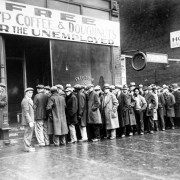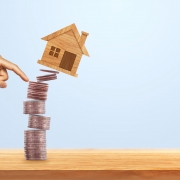The housing crisis is still fresh in the minds of many. Less than a decade removed from our memory, the 2008 crash was felt by almost every American to some extent. The economic slaughter spread quickly as droves of Americans were forced to foreclose on their homes, too big to fail banks closed, and longtime businesses shut their doors. But even though the “Great Recession” is a recent event, it is still largely misunderstood.
A few years ago, the film The Big Short sought to explain the roots of the financial crisis to American audiences who were still looking for answers. As with most events, the 2008 crash was the result of several contributing factors. And while the film does a most excellent job at explaining the role subprime loans played in the inflation of the housing bubble, it missed one major component: the Austrian business cycle.
The film casts the financial sector as the real culprit of the crisis and to be fair, when it came to subprime loans, there was a lot of corruption that occurred on the part of financial lenders. But the subprime issue, which will be addressed at a later time, was only one aspect of the crash. The movie also suggests that if more government intervention had occurred, the Great Recession might never have happened at all. However, this is not only completely untrue, it also gives the government a pass for their integral role in not only the housing crisis but in the Great Depression as well.
Economic Hubris
The government meddles in the economy all the time and it never ends well for the people. However, as the Occupy Wallstreet movement showed us, it is much easier to blame rich bankers when the economy tanks than it is to point fingers at bureaucrats. But for those who subscribe to the Austrian school of economics, the business cycle shows us exactly what happens when governments intervene.
When the economy tanks and takes a turn for the worst, many immediately begin calling for the government to step in and fix it. Of course, history and economic logic have shown us that central planning does not work, especially when it comes to controlling an economy with so many individual moving parts. As Hayek famously said, “The curious task of economics is to demonstrate to men how little they really know about what they imagine they can design.”
But unfortunately, many government officials and ivy league economists believe themselves to be armed with enough knowledge to design and control the economy. And this hubris on their part has resulted in a tinkering of interest rates and a control of the money supply, which, unfortunately for individual results in a cycle of “booms and busts.”
Created by Ludwig von Mises and F.A. Hayek, the Austrian business cycle is a model that explains how typical business cycles occurs. The cycle starts with government meddling with the monetary and credit supply, which then creates an artificial “boom” in the economy. During these booms, employment is high and credit is widely available. But since the boom is the result of government intervention and not actual market forces at work, it is naturally unsustainable. Eventually, the market corrects itself and those who borrowed money during the boom are left with bills they cannot pay. This is the “bust” part of the cycle and this is also when recessions and depression occur as the market is trying to correct itself.
The Boom
In 2003, an economic “boom” occurred. Stock values were up, employment was high, homes were increasing in value, and the overall economy appeared to be thriving. But there was more to this period of economic “prosperity” than many people realized.
What was perceived as prosperity was really just smoke and mirrors. The government had inflated the money supply by printing more of it. This gave the illusion of wealth when in reality this was nothing more than inflation. But since the banks were given more fiat currency to lend, interest rates were low and credit was easy to get.
And since everything in the economy was being propped up by artificial means, a bubble occurred. Entrepreneurs felt more comfortable taking risks and borrowed more money to take on more ambitious projects. And since housing loans were so easy to get in the during this time, many people were purchasing homes that they really couldn’t afford. Initially, the monthly payments appeared to be affordable because of the artificially low-interest rates. However, these “easy to get” loans were subprime loans, which were adjustable rate mortgages. This meant that the rate could change resulting in monthly mortgage payments that were much higher than they were initially.
The Bust
Speaking of both the Housing Crisis and the Dot-com bubble that preceded it, Richard Ebeling writes:
“Is it any wonder that financial markets boomed, that standards of credit-worthiness for investment and mortgage loans almost disappeared, that real-estate prices went up and up? Both in 2000 and in 2007, when the Fed became concerned that its policy was creating an unstable and unsustainable inflationary environment, did it put on the brakes. And both times the Fed-created house of cards came tumbling down.”
When interest rates adjusted to realistic levels, monthly mortgage rates shot up, resulting in many people being unable to make their payments. But in addition to the housing market, entrepreneurs and businesses who had borrowed money for ambitious projects also found that the new interest rates were incompatible with their earning power. No one could pay their bills and even prominent businesses and banks folded.
Of course, many well-connected institutions received taxpayer bailouts to stay afloat. But you cannot spend your way out of a financial crisis. By bailing out these institutions, the recession was prolonged and those financially suffering were forced to subsidize the same big banks who had participated in this crisis.
By neglecting to recognize the role this plays in the Great Recession, you leave the door open for history to repeat itself. Already there are other “bubbles” being inflated. Student loan debt, for example, is at unsustainable levels. Additionally, recently the housing market, which has been on the rise in recent years, has been slowing down. Meanwhile, the government continues to intervene and the Federal Reserve continues to tinker with interest rates.







